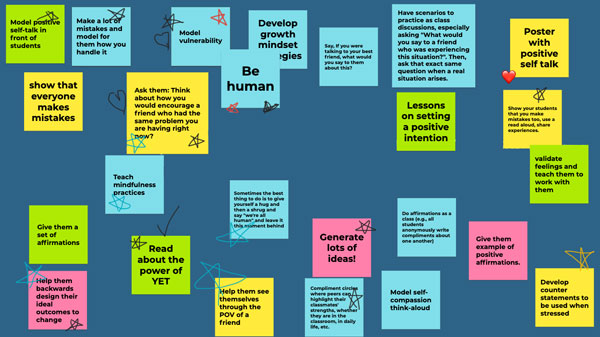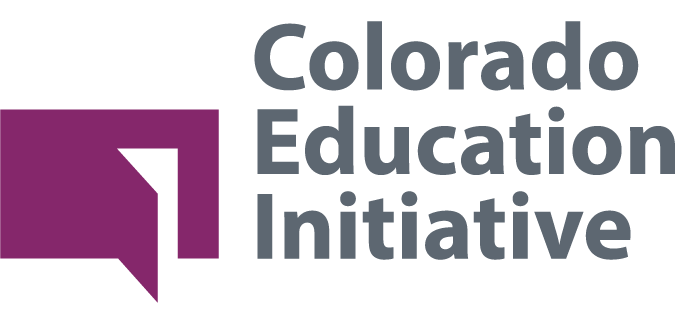St Vrain Places Priority on Staff Social Emotional Wellness
April 27, 2021
By Susan Paulsen, CEI Strategic Communications Manager
Efforts to meet student needs begin with meeting staff needs
St. Vrain Valley School District (SVVSD) has many programs and resources in place to ensure teachers and staff are supported in their work. One important area of focus is advancing the social emotional wellness of everyone in the St. Vrain system. Sophia Yager, the district’s Health Services Coordinator, spends a lot of time thinking about crisis fatigue, and how to provide the staff at St. Vrain Valley Schools with tools for self-care and strategies to address their own social emotional needs. She recognizes the importance of focusing on adult resilience and well-being for everyone, to ensure they are positioned to effectively show up for SVVSD students.
To build on the district’s existing robust wellness and social emotional programs, Yager and Social Emotional Learning Coordinator Susan Davis are collaborating with CEI to provide a learning series for SVVSD staff that is focused on self-care, buffering stress, trauma responsive environments, and relationships. The series of five sessions launched this month with a focus on self-compassion and building resilience. More than 60 staff members are participating in the program.
“Our vision was to provide additional resources for our staff – from teachers, to counselors, interventionists, and our nurses – all of the folks who are really at the front lines,” Yager said. “The idea is to provide some new tools and space for recognition of what’s happening for each of them during this time.”
Some of the qualities of resilience include the ability to draw on personal strength, handle emotions, and keep calm. Davis explains that when we don’t take care of ourselves properly, our resilience can wane, and shares that if she is not getting adequate physical exercise or maintaining connections with people, she is much less resilient in the face of challenges. She equates this to “filling her bucket,” and this applies to staff and students. If we’re not doing the necessary things to take care of ourselves, we can’t always be resilient.
“There’s the individual part of yourself, and then it’s building community around you too,” Yager said. “For example, we’re doing this class, which is focused on individual growth, but then there are breakout sessions and people are talking to each other. You have to feel the support within the environment where you work. It also goes beyond that, where you’re integrating this into the culture for both students and staff, making resilience and relationships a priority for everyone.”
Building Resilience and Trauma Responsive Environments
This highly-interactive program creates the time and space for staff members to share and learn from each other and includes opportunities to practice supportive strategies. The series is provided in five sessions:
- Educator Resilience to Get Through Crisis Fatigue
- Relationships Build Resilience, Buffer Stress, and Promote Growth
- Developmental Relationships, Equitable Environments, and Social Emotional Growth
- Building Alliance and Cultivating Warm Demanders
- Developing Trauma Responsive Practice

We don’t always know what’s going on, and most of the time students aren’t going to tell you what their challenges are, Davis explains. Understanding that and leaving space for them to be able to express themselves in a way that is open and safe increases the likelihood that they will be able to reach out to a trusted adult eventually. If students do not feel safe, it is unlikely they will be calm and prepared to learn, because they can’t access their ‘thinking brain.’
Developing trauma responsive environments is a key component of providing a classroom conducive to learning. The concept of a trauma responsive environment is not introduced because something specific has happened, or something is wrong, Yager emphasizes.
“Every human has different experiences that have affected them, and we don’t always know what’s going to trigger a reaction related to those experiences. If you have safe, kind, compassionate environments where people understand that we all bring experiences, it becomes more than just ‘everybody’s going through something.’”
Davis anticipates the work underway now will lead to increased capacity for supporting kids. This learning series was organized around school teams, and Davis hopes the participants will share the knowledge from these trainings with the rest of their school and implement their learning in some way.
“I’m really excited to follow along with everyone in the group to see where it takes them and how I can piggyback on their learning and expand it,” Davis said.
“Staff self-care and staff social emotional learning has been a priority, because if we don’t have that, we can’t meet the needs of kids,” Yager continued. “Students and staff are going through this pandemic at the same time, and we all need the same supports, it just looks a little different for teachers and staff than it does for students.”
